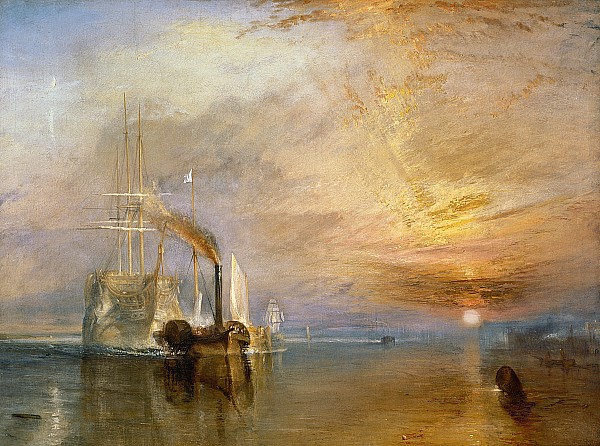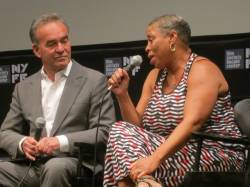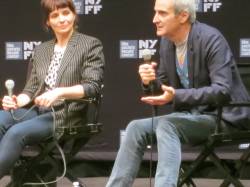-
Albert Maysles: IRIS (2014)
ALBERT MAYSLES: IRIS (2014)

Style never grows old
As the percentage of citizens who are older increases, more attention is drawn to their activities, one of which appears to be dressing up. Hence there is a new film by Lina Plioplyte called Advanced Style, about Ari Cohen, a blogger and photographer who focuses on older women he finds stylish. A couple of years ago there was Bill Cunningham: New York, about the tireless octogenarian New York Times lensman with the old-fashioned Bostonian accent who snaps stylish men and women on the streets of Manhattan and at chic galas, as he has done for decades. Cunningham makes several fleeting appearances in the New York Film Festival's documentary sidebar film Iris, which not only spotlights the remarkable eighty-something fashionista Iris Apfel and her loving husband, who celebrates his hundredth birthday in the film, but is shot by the veteran documentary filmmaker Albert Maysles, who himself is eighty-seven.
Iris is about style as flamboyance. Nothing understated; nothing modest, but asserted by a simple pin, in Iris' looks, which involve bright-colored ensembles, mixing clothes from the famous designers with secondhand finds. But the key to her effects is something she says her mother taught her: accessorize, accessorize, accessorize. And does she ever. Iris piles on heavy necklaces and bracelets that must weigh as much as her small frame. She's a slight woman, with close-cropped white hair and signature big round glasses. Their shape never varies, though the frame colors do and the lenses shift from dark to clear.
Albert Maysles (whose brother and filmmaking partner died in the Eighties) chose a good time to cover Iris Apfel, because she seems to move from being known in the fashion trade to becoming downright famous during the period documented. In the film, we find that a show put on about her by the Metropolitan Museum, which went on tour to other locations, each in her view better than the last, is as a result living the life of a celebrity, despite her husband's increasing age and her own health problems (a broken hip, which she conceals from her husband). She is frequently interviewed, is photographed by the likes of Bruce Weber (a longtime admirer) leactures to young women about fashion, and is seen shopping and bargaining for clothes and accessories, including in Harlem. More about this than about Iris and her husband's business careers, though passing mention is made of her company making reproductions of old fabrics, and her interior designing. These must have been profitable? At least they have impressive, richly jumbled digs on Park Avenue and in Palm Springs, in addition to a huge storage warehouse for her endless accumulations in Long Island City.
It is a basic principle for Iris that being "pretty" isn't important, and is ephemeral. Though images of her earlier in her sixty-six year marriage show she was quite a good-looking woman, she is an eccentric peacock rather than a swan. Style (and ego) are excellent preservatives. The other message of the film is positivity. Iris's good humor and wit are evident in her every utterance, and also in her husband's. Clearly their attitudes and their loving marriage have added life to their years that anyone would envy, or take as a role model.
As Maysles documentaries go, this is a minor one, enjoyable though it is. The Maysles are most famous for Salesman (1968), Gimme Shelter [/i](1970) and Grey Gardens (1975)[/i]. They beautifully documented Christo's Valley Curtain (1974) and Running Fence (1977) and Christo in Paris (1990). There are several films showing the older Horowitz, The Last Romantic (1985) and Horowitz Plays Mozart (1987) But there are many others. Not to be confused with D.A. Pennebaker (which I was doing), who is famous for the iconic 1967 Boy Dylan movie Don't Look Back, as well as Monterey Pop.
Iris, 73 mins., was screened for this review as part of the Spotlight on Documentary series of the 52nd New York Film Festival, the film's world premiere; it subsequently showed in nearly two dozen film festivals. Albert Maysles passed away in March 2015 and this was his second-to-last film; the final one is In Transit, a coming documentary that explores the stories of passengers aboard the long-distance train The Empire Builder. Iris opened in US theaters Wed., 29 April 2015.
Last edited by Chris Knipp; 09-07-2016 at 09:39 AM.
-
Gabe Polsky: RED ARMY (2014)
GABE POLSKY: RED ARMY (2014)

The "Russian Five," Fetisov top right
A quick and personal history of Russian hockey and hockey players from the Cold War through Glasnost and beyond
Anyone interested in the nexus of sports and politics during a key period of the modern era must want to watch Ukrainian-American Yale hockey player and filmmaker Gabe Polsky's Red Army. But bear in mind: archival footage and hockey reels, tight editing, and humor notwithstanding, this is a standard talking-head documentary.
The story is interesting and the principal talking head is an impressive guy. At 56 Viacheslav "Slava" Fetisov, who takes over the film in the first few minutes, has led a richer life than most. For thirteen years 1976–89) he played for the Red Army Russian national ice hockey team, the best of the best. Then he quit the team because of conflicts with the coaching, and played in the US with the NHL (1989–98), pioneering in this sports immigration process that had been strictly forbidden under Soviet rule. Former teammates came to the NHL, which enabled him for a while to play again as part of legendary Russian Five, one of the most powerful units in hockey history, including himself, high-scoring right-winger Sergei Makarov, left-winger Vladimir Krutov (AKA "the Tank”), tough and wiry center Igor Larionov (“the Professor”) and fellow defenseman and best friend Alexei Kasatonov. He helped win two Stanley Cups in '97 and '98. Then he coached for four years (1998-2002) -- leading his American teams to great successes. In 2002 he returned to Russia with his wife, going on on to coach the Russian national team in the totally different post-Soviet world, under Putin serving (till 2008) as the Russian Minister of Sport.
The villain of the piece is coach Viktor Tikhonov, a cruel task-master who hardly treated his players as humans, insisting on having them live apart from family eleven months a year and forbidding Fetisof from visiting his father on his deathbed. Tikhonov was brought in after the notorious defeat of the Russian national team by a group of relatively green US college players in the Winter Olympics at Lake Placid in 1980. The benevolent, and more complex, spirit of the film is legendary coach Anatoly Tarasov, who introduced metaphors from chess and ballet into play, along with imaginative and fun training methods that were at the same time rigorous and grounded in socialist concepts of placing teamwork over individualism. The great players were like brothers and somehow fundamentally the same.
A shortcoming of this fast-moving film is that despite describing the unique features of classic Russian hockey style -- intricate, complicated, inventive, balletic, relying a lot on passing back and forth -- this is never satisfactorily contrasted with American (or European) style, not in a manner than anyone not thoroughly familiar with the game would perceive. A major strength and a key to its warmth and life is the friendly, humorous, almost father-son relationship between young Polsky and big shot Fetisov -- whose gently Russian-accented but articulate English dominates the film and who tends to use talking on his cell phone as an excuse when Polsky asks him an uncomfortable question. Fetisov never defected, and he represents Russia, despite his years in the US. He is critical of the chilly Tikhonov, but never of the Russian system. He has been involved recently in managing the many hirings of Russian hockey players abroad, but seems even more proud of having supervised establishment of a wide infrastructure of hockey stadiums throughout Russian during his Sports Minister tenure. In some ways he is clearly nostalgic about a Soviet system that pointed him, as an anointed national athlete from age 16, toward an illustrious career. Back in the day, after that freak 1980 defeat, his team smashed Gretsky and his Canadian team.
Red Army, 85 minutes, debuted at Cannes, and has played in over a dozen international festivals. Screened for this review at the 52nd New York Film Festival as part of its Spotlight on Documentary series. At the Q&A Fetisov and Polsky were both present, and Fetisov began by calling Polsky "a good boy." A Sony Pictures Classics release. Releases are set for 14 Nov. 2014 (NYC) and 22 Jan. 2015; 9 Feb. in San Francisco and 19 June 2015 in the UK.

Fetisof at the 52nd NYFF
[CK Photo]
Last edited by Chris Knipp; 12-03-2014 at 03:50 PM.
-
Mike Leigh: MR. TURNER (2014)
MIKE LEIGH: MR. TURNER (2014) ]

Timothy Spall in Mr. Turner
Leigh's beautiful non-biopic J.M.W. Turner biopic skirts convention so closely viewers may miss it
In his Topsy Turvy-like movie about the great English working-class-origins landscape painter Joseph Mallord William Turner (1775-1851), Mike Leigh flirts dangerously closely with conventions and emerges with a sense of originality so subtle it's not certain audiences will get what he's doing. What could be cornier than a picture about a landscape painter that's full of mimicry of his classic uses of sunlight and haze? With the help of cinematographer Dick Pope, this is just what Mr. Turner does, yet it's repeatedly breathtaking. The "Fighting Temeraire," the boat on the way to demolition in the celebrated painting, is added in by CGI; but the water and the light were captured by Pope. Nothing could capture the magic of the painting in the National Gallery (no reproduction can) but with his color widescreen images Pope delivers beauty on top of beauty without seeming heavy-handed or conventional.
What would be more obvious than a sky above-mud below portrait of an artistic genius who produces gorgeous and etherial images yet is a crude, inarticulate boor? Mr. Turner delivers that kind of obvious contrast too. Yet thanks to the subtle, meandering specificity of Leigh's action (influenced no doubt by his working methods of a long period of improvisational character development rehearsing leading up to the shoot), and due also to Timouthy Spall's complexly enigmatic character portrayal, a mass of downward looks and a symphony of communicative grunts, this standard contrast comes to seem both inevitable and unique.
J.M.W. Turner, as seen here with his father, his ex-mistress, his housekeeper-cum-lover of convenience and his naive Margate final mistress Mrs. Booth (Marion Bailey), is a classic obsessive type, whose fascination with color and light and originality in manner and media of painting (later mocked by his enemies in a music hall skit), is depicted not by any declarations or debates, but through moments of action. (Spall has explained that he spent several years learning how to paint before the making of the film.) Turner is hardly a high liver. We barely even see him eat (there's a bit of crude sex with the housekeeper, and initiation of relations indicated with Mrs. Booth). But we see pigments ordered and his father mixing them. We see canvases set up. We see morning and evening light contemplated. We see Turner rushing from one place to another. He does not acknowledge having any children (he had several by the earlier mistress, played by Ruth Sheen); he has no use at all for the ex-mistress. He is abrupt with the housekeeper. He seems hard on his father, though they are like brothers, and kiss on both cheeks when they meet.
In everything Turner is a man illustrating the first and sacrosanct rule of an artist: "The important thing is to be doing the work." It's all that matters. All else is secondary. This may go against the bourgeois artist pattern of those, like Magritte, who go off to their studio every morning as to a desk job, and come home punctually at night. But how many serious artists are like that? Ultimately Turner's obsessiveness in Leigh's film isn't a romantic cliché, but more a no-nonsense representation of artistic practice of all artists whose genius and commitment make their work great and their private lives a bit of a shambles.
The other element of course is the setting and the period feel, which also risk seeming merely conventional. These Leigh has said are as thorough and authentic as they could make them, however inadequate that may turn out to be. We begin with a standard costume-drama street scene, with a horse-drawn carriagte tooling along an elaborate period-authentic street. And this is where Mr. Turner runs the greatest risks -- because the film may seem to look very much like a Masterpiece Theater TV drama, and the 2 1/2 hour run-time may make you think it ought to be a mini-series. Look more closely, though. Because Mike Leigh films, even the most Masterpiece Theater-ish, are essentially maverick, sui generis works, playing their Englishness for all they've got, using typically excellent English actors, but going their own way.
It's been said that some of the most memorable moments of Mr. Turner are those of the artist with other artists, notably the "problematic" loser of an biblical painter Hayden (Martin Savage) , and the whole row of other painters at the Royal Academy (a magnificently realized setting). This is not so certain. Turner's run-ins with the annoying and pathetic Hayden are examples of Leigh's liking for colorful and funny bits. They also show Turner not suffering fools gladly. As for the Royal Academy encounters with other artists, well-staged though these are visually, they feel perfunctory, a costumed reading-off of an indexed list of names. They show how the outer edges of Leigh's films at times can seem unnecessary. Like so many 2 1/2 hour films, even this one could have lost 15 or 20 minutes without pain and with more focus. But Leigh treasures his sense of naturalism and his sense of milieu, and these are superbly rich, not only in human detail but in historical atmosphere.
Would one have liked to cut out the highly satirical representation of a young, spoiled, lisping, slightly nelly John Ruskin (Joshua McGuire), the budding critic who champions Turner's proto-impressionist, increasingly abstract work at a time when the pre-Raphaelites are gaining center stage? No, that's another one of Leigh's funny bits, and another sign of Turner's total independence and focus. He doesn't promote himself. He hides his identity (at first with Mrs. Booth). And he does not care if he is being promoted. (He rebuffs Ruskin's dismissal of Claude Lorrain with a comparison so crude the young snob doesn't seem to get it.)
Would one cut the sequence where Turner has a daguerreotype made, asking the photographer many questions and then saying, with throwaway fatalism, "Then I think I'm finished"? Of course not, because it's another poignant bit of art history. Turner isn't seeing himself out-dated, but seeing the world change. Mr. Turner is made up of this collection of segments, sacrificing strong narrative, while not avoiding biopic conventions (death scene and bequeathment declaration). This, besides the subtle skirting of conventions, is another reason why conventional audiences may not embrace this film, or if they do, will do so for the wrong reasons. But for me its magic remains in its overriding sense of a man whose life more than anything else is a passionate pursuit of shimmering luminosity.
 ....................
.................... 
DP Dick Pope at P&I Q&A..................... Mike Leigh [CK Photos]
Mr. Turner, 149 mins., debuted in Competition at Cannes, where Timothy Spall won the Best Actor prize. Many other international festivals, including Telluride and Toronto. Screened for this review as part of the 52nd New York Film Festival. US theatrical release (Sony Pictures Classics) 19 December.

"The Fighting Temeraire tugged to her last berth to be broken up" (1838)
Last edited by Chris Knipp; 03-29-2015 at 11:55 AM.
-
Paul Thomas Anderson: INHERENT VICE (2014)
PAUL THOMAS ANDERSON: INHERENT VICE (2014)

Katherine Waterston, Joaquim Phoenix in Inherent Vice
Thomas Pychon's stoner SoCal private eye novel gets a worthy if perhaps too-faithful adapter in P.T. Anderson
As Paul Thomas Anderson's Inherent Vice begins it's 1970, in an LA beach enclave called Gordita Beach. Things start off when an old girlfriend, Shasta (Katherine Waterston) turns up at the pad of mutton chop, straw hat wearing stoner private detective Doc Sportello (Joaquin Phoenix) to beg him to help protect her new lover, millionaire real estate developer Mickey Wolfmann (Eric Roberts), from being thrown into the "loony bin" by his wife to seize his money. Then Shasta and her lover both disappear, and Doc is led to a boat called "Golden Fang," which is also perhaps a drug ring, or a dentists' investment scheme. Things get more and more complicated and goofy. More and more characters, subplots, and suspicions arise, the film becoming, in the words of Todd McCarthy in Hollywood Reporter, a "dazed journey through the mash of corrupt cops, druggies, new age cultists, hookers, Nazi bikers, Black Power toughs, real estate tycoons, Nixonian politicos and free love chicks that was L.A. forty-four years ago." Over and over, Doc runs into ambitious, aggressive, but not entirely unfriendly LA cop Detective Christian "Bigfoot" Bjornsen (Josh Brolin), a kind of pal-cum-nemesis for him. The action is continuous and humorous, though also sometimes dark.
This is an accomplished film, as one would expect from P.T. Anderson, but a big departure from what he has done before in tone and look. Certainly a remarkable artifact, it's also something of a disappointment. The comedy is ultimately muffled, the point is obscure -- other than multiple homages to the period and to the noirs and neo-noirs that celebrate it, like Robert Altman's The Long Goodbye. Chinatown, and Night Moves. The Zucker-Abrahams-Zucker film comedies are also mentioned among PTA's many sources and inspirations, not to mention Kiss Me Deadly, The Big Sleep, and Cheech and Chong's Up in Smoke. (Not, evidently, James Elroy, and not really much of a film as beautifully constructed as Chinatown, despite its mention.) Though word is there was plenty of improvisation on set, the basic plotline is faithful to Pynchon. In fact that seems to be the main problem: it's not clear what the director is doing other than playing around with his source material a bit. And having a bit of fun doesn't seem enough for a filmmaker this intense and this brilliant. Note also that those many sources are not noted for their good storytelling (The Big Sleep's action notoriously incomprehensible even to the cast and crew). A pity someone noted for neat and tidy construction, like Elmore Leonard, didn't serve as a model.
This is the first movie adapted from a Thomas Pynchon novel, and for you statisticians out there, it's also PTA's first literary adaptation and his seventh feature, based on Pychon's seventh novel. This is a film that could conceivably yield endless pleasures to the obsessive cultish re-watcher. First time through, for someone who hasn't read the novel (or any Pynchon novel) -- well, I have to say it's the most disappointing PTA film I've encountered, and I even managed to like Punch Drunk Love; I'm a pretty big fan. At two and a half hours, with bevies of characters with funny names played by interesting but sometimes not that well-known or easy-to-recognize actors (Eric Roberts, for instance: I didn't guess it was him). -- and involved in (stoned) film noir plot(s) that interconnect but keep spinning out and out and out, introducing new characters and possibilities in every scene or two, it's crazier than David Fincher's Gone Girl. Gone Girl felt crazy and over-inventive too, but on a more modest scale. I have a feeling that surely Inherent Vice is "better" than Gone Girl, that it comes from a more distinguished literary source, at least. But Gone Girl is more conventional and accessible movie fun, with the kind of surprises and climaxes you can latch onto and enjoy. Basically these two big long much-hyped new American movies are almost equally shapeless, or lacking in strong, satisfying narrative structures. Minute to minute and scene to scene, Inherent Vice is fun, but one starts feeling one isn't in on the joke.
Before I watched Inherent Vice the person next to me, another attendee of the 52nd New York Film Festival in which it was featured, told me that every good, smart movie has to have a subtext, and that (in her view) Gone Girl had fallen short because it lacked one. This is probably true. Fincher's new effort, accomplished as it is, is still basically just clever, expensive cinematic playing around with skillful schlock. What about Inherent Vice? Does it have a subtext? You would think that anything by a famous, certifiable post-modern novelist would, even sub-text on sub-text on sub-texts. But more than one of the reviewers of the book when it came out in 2009 noted that it's unironic, embracing SoCal's most stoner days of the late Sixties and early Seventies with nostalgic enthusiasm and looking on its bumbling (but not dumb) hero, the pothead, acid-dabbling private dick protagonist Doc Sportello with kindly indulgence. As Doc (the greeting "What's up, Doc?" is used once too often), Joaquin Phoenix, on mellow autopilot, seems much at ease. But he also seems unfocused, and lacks that intensity and precise timing he displayed in Anderson's previous film, The Master.
Mind you, as I said, the re-watching potential of this movie is high, and Anderson's brilliant use of actors makes for some amusing cameo-like moments. Martin Short is delicious as a cokehead dentist. It's fun watching Benicio Del Toro, Jena Malone, Reese Witherspoon, and the others come and go. Joanna Newsom’s readings of Pynchon's narration as voiceover provide a nice extra layer of nostalgia and irony -- or perhaps just adds sexy spice to the confusion.
Anderson may be having fun here. Actors in the film report a sense of chaos, but a pleasant atmosphere, on the set. This is Anderson letting go, easing up from the epic intensity of previous films. But there is not much in its place. There are funny moments, yes, but the humor becomes muffled. Jokey moments do not make comedy. And if timing is essential for comedy, and it usually is, Phoenix undercuts the humor when he's on screen. The film grinds to a halt with the stoner mood he carries around. Anderson jolts the film awake by introducing new incidents and new characters in every successive scene. But that's not enough. It's fun to be challenged, not much fun to be befuddled.
Inherent Vice, 149 mins., debuted 4 Oct. 2014 at the 52nd New York Film Festival, where it was screened for this review. Presented as the NYFF Centerpiece film, and its world premiere. Opens (limited), 12 Dec., and 9 Jan. 2015 (wide) (Warner Bros.)
Last edited by Chris Knipp; 11-19-2014 at 11:56 PM.
-
Nick Broomfield: TALES OF THE GRIM SLEEPER (2014)
NICK BROOMFIELD: TALES OF THE GRIM SLEEPER (2014)

NICK BROOMFIELD AND PAMELA BROOKS
Serial killing of women in South Central Los Angeles
Nick Broomfield has made a clean, forthright documentary about dirty, ugly material: sex-related serial killings in the L.A. ghetto, and the cruel indifference of the L.A.P.D. to the welfare of black women and murders of prostitutes. Making himself an understated but ever-present character in his film, Broomfield focuses on two interrelated topics. First is his personal and revealing investigation of the life of Lonnie Franklin Jr., arrested in South Central Los Angeles in 2010 for the serial killing of who knows how many women. In this Broomfield and his two-man crew are materially aided by Pam (Pamela Brooks), a lively local former crackhead and prostitute ("crack whore") he hires on as navigator and source of contacts. (He's not so bad himself at getting three male neighbors to talk, and open up as they talk more.) The second topic is sociological: sexism, the economic and racial divide, politics, police corruption. There's an organization of black women pushing back at the police and the city's long indifference to this case, the Black Coalition Fighting Back Serial Murders. Its leader, Margaret Prescod, is much heard from. (This might hijack the film, but Pam and Broomfield's investigation is too vivid and intense to allow that to happen.) It seems the cops had a practice of identifying murdered prostitutes as non-human, and some thought Franklin was doing good by eliminating them. The mayor, police chief, and soon-to-become governor again Jerry Brown congratulate themselves for capturing Franklin. But the murders go back to the 1980's. If they had bothered to investigate then and questioned prostitutes and crack addicts, the cops could have apprehended Franklin and cut short the killings twenty years ago. They didn't want to. They deliberately let it slide. This may be the "message" of the film, which one writer calls Broomfield's "magnum opus." But Kurt & Courtney (1998), Biggie & Tupac (2002), Aileen: Life and Death of a Serial Killer (2003) and the docudrama Battle for Haditha (2007) seem equally worthy examples of Broomfield's skill at taking walks on the wild side and unearthing ugly truths. What is nice about Tales of the Grim Sleeper is that it seems to follow more or less the chronology of Broomfield's investigation, and reads like a juicy muckraking magazine article for Rolling Stone or Vanity Fair whose sources are always clear. But this has some uncensored bits, crude language and disgusting images of perverted sexual practices that are too unpleasant for many viewers. Cinematography by Nick's son Barney, who worked on Hubert Sauper's recent We Come As Friends (ND/NF 2014).
Tales Of The Grim Sleeper 105 mins., debuted at Telluride, also shown at Toronto. Screened for this review as part of the 52nd New York Film Festival, where it was the New York premiere and the only documentary included in the Main Slate of the festival. NYC theatrical release begubs 19 December 2014 (Quad Cinema). To be shown on HBO 27 June 2015.

NICK AND PAM @ NYFF P&I SCREENING
[CK Photos]

Last edited by Chris Knipp; 04-20-2015 at 02:50 PM.
-
Olivier Assayas: CLOUDS OF SILS MARIA (2014)
OLIVIER ASSAYAS: CLOUDS OF SILS MARIA (2014)

JULIETTE BINOCHE AND KRISTEN STEWART IN CLOUDS OF SILS MARIA
A well-made film that never seems as sophisticated as it thinks it is
Clouds of Sils Maria is an accomplished, well acted, but labored and self-conscious film created by Olivier Assayas for Juliette Binoche. Maria Enders, her character, is a famous forty-year-old actress who's asked to take on the role of the older woman in a revival of a play called Maloja Snake, in which twenty years earlier she played the younger one, Sigret, a springboard to fame for her then. In the play, the young woman is an assistant to the older one, and a lesbian affair develops and the cruel, manipulative Sigret dumps her boss, driving her to suicide. As she debates taking on this less flattering role, Maria practices her lines with her twenty-something personal assistant Valentine (Kristen Stewart), with whom she has a relationship not lesbian, but perhaps too familiar and competitive to be properly professional. Meanwhile the actual part of Sigret in the revival is offered to a cocky and controversial young media superstar, Jo-Ann Ellis (Chloë Grace Moretz, the only actor who brings any humor to the screen). While issues of today's even more media-dominated world press upon Maria with interviews, awards ceremonies, fashion shoots and the like, Chloë Grace Moretz's Lindsey Lohan-like character turns out to be both scandalous and smart, if not necessarily wise: she's dating a hip, handsome young English writer called Christopher Giles (Johnny Flynn) whose wife attempts suicide as a result.
Most of the action takes place in the Swiss Alps. Both "Sils" and "Maloja Snake" refer to the alpine region from whence comes the author of the play, understandably an idol of Maira Enders', whom she and Val were coming to a ceremony in honor of, but then dies just before they arrive. Assayas has said he originally thought of using Fassbinder's The Bitter Tears of Petra von Kant as the play, then decided to use a simpler version of the story of his own invention.
Clouds of Sils Maria has a great deal of gloss, but its over two hours' length could have used some cutting. There is much drinking and smoking and forced laughter between Val and Maria, yet their dialogue isn't as sharp or as revelatory as it might have been, despite being over-explanatory. Binoche's slightly artificial manner when acting in English underlines this. Some of the alternations between acting and being are cool, though.
The revelation of the film, however, is Kristen Stewart. Hitherto branded as a mere pop-culture creation for her part in the mostly execrable "Twilight" series movies, she's the best thing here, articulate and smart, her naturalness in interacting with Binoche making Binoche look better. Who knew that, if given material as intelligent as this, she would take it on with such ease and fluency? This should open up Stewart's career to more sophisticated roles now, including more European ones.
Mike D'Angelo points out in his Cannes review in The Dissolve that this brings together elements of two of Assayas's (key?) previous films: the "knowing film-world milieu" of Irma Vep, and the "poignant juxtaposition of generations" of Summer Hours. D'Angelo calls Sils "a typically smart, incisive, beautifully crafted analytical exercise" for Assayas, but notes that it's "too carefully worked out to be particularly intuitive." More than that, it's too pleased with its own cleverness and more heavy handed and self-important than it ought to be, and it relies on a plot structure whose parallelisms are overly self-conscious.
Some other elements aren't quite right. For all Assayas' elaboration of dialogue (and the line practice between Val and Maria goes on and on), the film's structure feels in some ways clumsy. Binoche isn't forty as Maria's supposed to be but fifty, of an age past the middle-age self-doubt of her character. Toward the end, Stewart's character simply disappears after an incident in the mountains: there's no transition. Among the excesses (too much of some secondary characters, like the play director) there are glimpses of the play revival, with an over-elaborate, ultra-modern set inexplicably and unnecessarily containing a bevy of minor characters -- or are the stagehands? This film is (in current parlance) "layered," but its self-reflexiveness and dark-mirror parallelisms aren't particularly subtle. As in Kiarostami's Certified Copy, also starring Binoche in self-conscious English, this is a European art house film reveling in its literary contrivance but only momentarily (when Stewart or Moretz are talking in some scenes) coming to life. Apart from all the travelogue shots of mountains, fog, and clouds to surging music, for the most part this feels more like a stage play than cinema.
Clouds Of Sils Maria , 124 mins., debuted at Cannes, shows at various other festivals. Screened for this review as part of the 52nd New York Film Festival. At the Q&A for press, Kristen Stewart again showed herself to be notably confident and smart. It was disappointing to find Binoche and Assayas seeming to refer to Summer Hours, a lovely, humanistic work, as if it somehow wasn't a real movie but Sils Maria is. Sils does certainly attempt to delve more into the world of women's feelings, which is what Binoche wanted. But the media stuff (and particularly all the references to tablets, smart phones, social media and paparazzi) adds little profundity or relevance, though. The film came out in France (as Sils Maria) 20 August 2014 and got good reviews (AlloCiné press rating 3.8): the interplay of "art" and "life" was approved of. This may be a better film to talk about than to watch, but ambitious it certainly is.

BINOCHE, ASSAYAS @ NYFF P&I Q&A

KRISTEN STEWART @ NYFF P&I Q&A
Last edited by Chris Knipp; 10-13-2016 at 09:22 AM.
-
Robert Kenner: MERCHANTS OF DOUBT (2014)
ROBERT KENNER: MERCHANTS OF DOUBT (2014)

The PR guys -- "pundits for hire" -- behind climate change denying
Robert Kenner is a muckraking documentary filmmaker of the anti-corporate kind. He is known for the 2009 Food, Inc., a film showing that US food production is a virtual monopoly of a small number of corporations. In Merchants of Doubt, he fixes his sights on shills, think tanks, and lobbyists whose aim is to debunk global warming, in the interests of producers of "dirty" energy, mostly petroleum and coal. His first discovery and perhaps most important revelation is that many of these people previously worked to debunk the danger of tobacco smoking. This failed; nobody can credibly claim that smoking doesn't kill you and that nicotine isn't addictive. So they moved on to the far more important cause: climate change. Kenner's metaphor, his frame-image, is of the professional magician or card manipulator. The "merchants of doubt," the agents of climate change deniers, use similar tricks, he suggests. Only a magician is honest about what he is doing. These guys aren't.
This is a conventional "issue" documentary. The issue is important, but the style of the film, a mix of talking heads and perky visual aids, is nothing unusual. In fact, much of the material is familiar too: if you watch "issue" documentaries, from An Inconvenient Truth on, you're aware of global warming as depicted in films. A stunnng example is Jeff Orlowski's 2012 Chasing Ice, which documents the disappearance of glaciers. Chasing Ice, made over time by a then Stanford student, little more than a kid, which popped up at Sundance two years ago, is a stunning proof of what the heating up of the planet is doing. It might be more powerful to raise awareness.
Kenner's film is a partial explanation of why nothing substantial is being done by the US to reverse or slow down global warming. Perhaps the biggest explanation is that to control this process requires, as Merchants of Doubt mentions toward the end, requires changes in our way of life all over the planet that it's virtually inconceivable. The more specific obstacle is the oil companies. These are the richest and most powerful corporations on the planet. How do you stop them from manipulating the situation to go the way they want? Merchants of Doubt focuses on the agents of these corporations, their PR men.
The specific interest of Kenner's new film is that it identifies a number of people on both sides and presents their stories. Naomi Oreskes and Erik Conway are people who have documented the anti-climate change hype-purveyors. Various lobbyists or spokesmen (some scientists, some mere lobbyists or spin doctors) are also named and chronicled in the film. For anyone interested in fighting in the cause of saving the planet, there is useful information here not only about who the main opponents like Exxon Mobil and the Koch brothers are, and who their agents are, but the kinds of arguments they present and the venues in which they typically present them. But the film isn't a shocker like Chasing Ice or comprehensive and basic like An Inconvenient Truth, and ma tend to function more (though not entirely: newcomers to the issues can be shocked by this too) as preaching to the converted. It might even cut the other way though: as Justin Chang points out in his Telluride review for Variety, this film is so "intrigued by its designated villains that it almost conveys a perverse form of admiration, and the fascination proves contagious." They're slicker than scientists, who, Kenner shows, though the ones who know the subject are not always best at conveying what they know. This film is also a detailed study of lying and deception for money, a practice that can be observed in other fields.
This film was screened for this review as part of the Spotlight on Documentary sidebar of the 52nd New York Film Festival.
Merchants of Doubt, 96 mins., debuted at Telluride and was purchased by Sony Pictures Classics.
Last edited by Chris Knipp; 11-20-2014 at 12:00 AM.
 Posting Permissions
Posting Permissions
- You may not post new threads
- You may not post replies
- You may not post attachments
- You may not edit your posts
-
Forum Rules





 Reply With Quote
Reply With Quote


 ....................
.................... 










Bookmarks